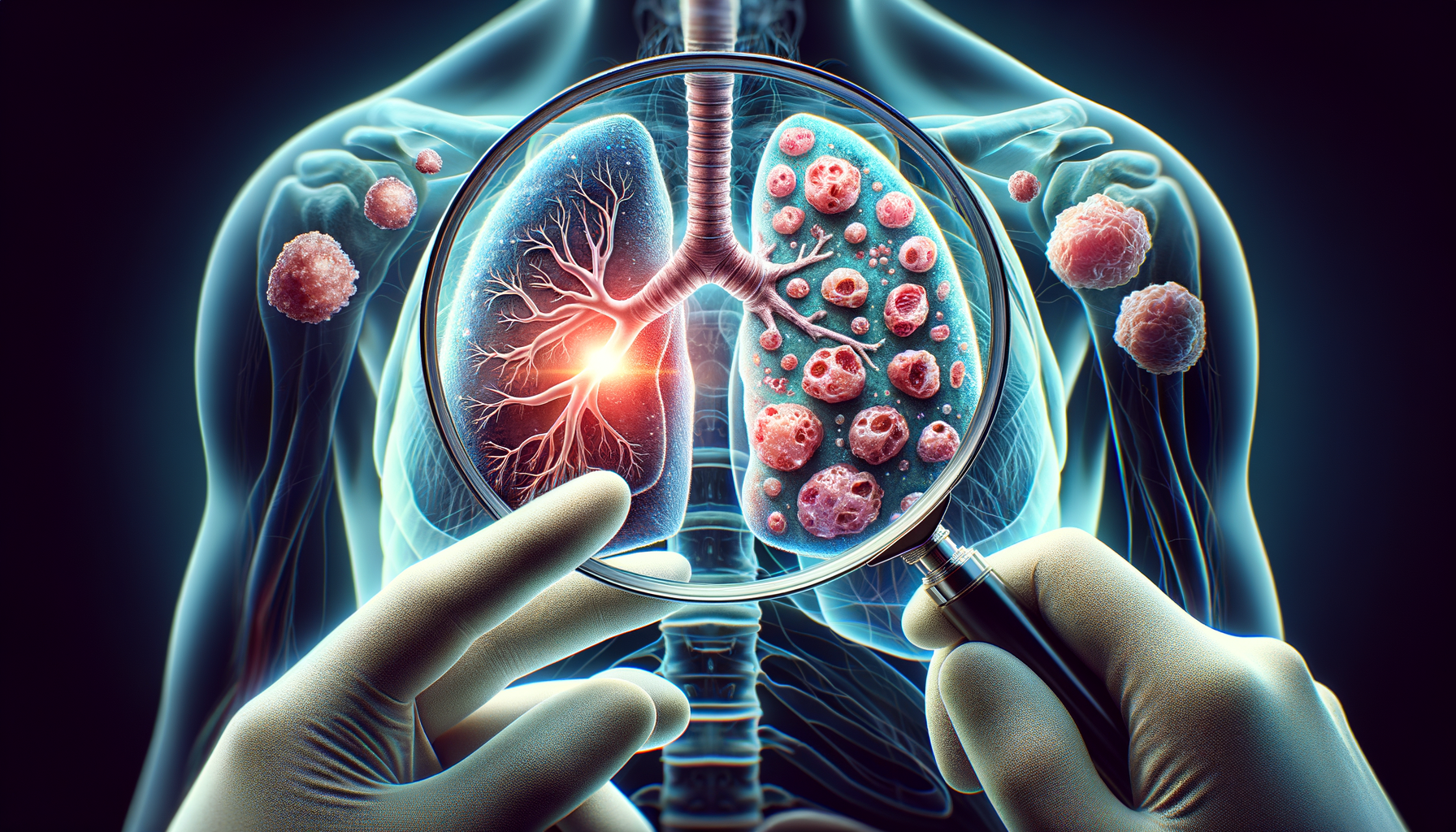Understanding Lung Cancer Symptoms
Lung cancer is a serious condition that affects millions of people worldwide. Its symptoms can often be mistaken for less severe illnesses, making early detection challenging. Common symptoms include a persistent cough, chest pain, and shortness of breath. These symptoms occur because the cancerous cells in the lungs interfere with normal respiratory functions. A persistent cough that doesn’t go away or worsens over time is a key symptom. This cough may produce blood or rust-colored sputum, which should not be ignored. Chest pain that is constant or worsens with deep breathing, coughing, or laughing is another alarming sign. Additionally, a noticeable change in breathing patterns, such as wheezing or shortness of breath, can indicate lung issues. Recognizing these symptoms early can lead to a more favorable prognosis.
Early Warning Signs of Lung Cancer
Early detection of lung cancer significantly increases the chances of successful treatment. However, the early stages of lung cancer often present subtle signs that are easy to overlook. Some of these early warning signs include unexplained weight loss, fatigue, and loss of appetite. These symptoms are not exclusive to lung cancer but should prompt medical evaluation, especially if they persist. Another early sign is the development of a hoarse voice, which can occur if the cancer affects the nerves controlling the larynx. Frequent respiratory infections such as bronchitis or pneumonia can also signal lung cancer, as the disease compromises lung function. It’s crucial to pay attention to these early signs, as they can provide the first clues to a diagnosis.
Lung Cancer Detection Techniques
Detecting lung cancer early involves a combination of diagnostic techniques. Imaging tests such as chest X-rays and CT scans are commonly used to visualize abnormalities in the lungs. These imaging techniques can reveal tumors or suspicious areas that require further investigation. If imaging tests suggest cancer, a biopsy may be performed to confirm the diagnosis. This involves taking a small sample of lung tissue for examination under a microscope. In some cases, a bronchoscopy is used, which involves inserting a thin tube through the nose or mouth to view the lungs and collect tissue samples. Advances in molecular testing now allow for the identification of specific genetic mutations in lung cancer cells, guiding targeted treatment options. These detection methods are essential for determining the stage and type of lung cancer, which informs treatment decisions.
Comparing Traditional and Modern Diagnostic Approaches
Over the years, lung cancer detection has evolved significantly with technological advancements. Traditional methods, such as chest X-rays, have been the cornerstone of initial lung cancer screening. However, these methods have limitations in detecting small tumors or early-stage cancer. Modern approaches, including low-dose computed tomography (LDCT), have improved early detection rates. LDCT scans offer detailed images with lower radiation exposure, making them suitable for high-risk individuals. Furthermore, the integration of artificial intelligence in analyzing imaging results has enhanced the accuracy and speed of diagnosis. While traditional methods remain valuable, modern techniques offer greater precision and earlier detection, crucial for improving survival rates.
Conclusion: The Importance of Vigilance and Early Detection
Understanding the symptoms and early warning signs of lung cancer is vital for timely intervention. With lung cancer being a leading cause of cancer-related deaths, awareness and early detection play pivotal roles in improving outcomes. By recognizing symptoms such as persistent cough, chest pain, and changes in breathing, individuals can seek medical advice sooner. Early detection methods, from imaging tests to advanced molecular diagnostics, provide a clearer picture of the disease, guiding effective treatment plans. Staying informed and vigilant about lung health can make a significant difference in the fight against lung cancer.




Leave a Reply